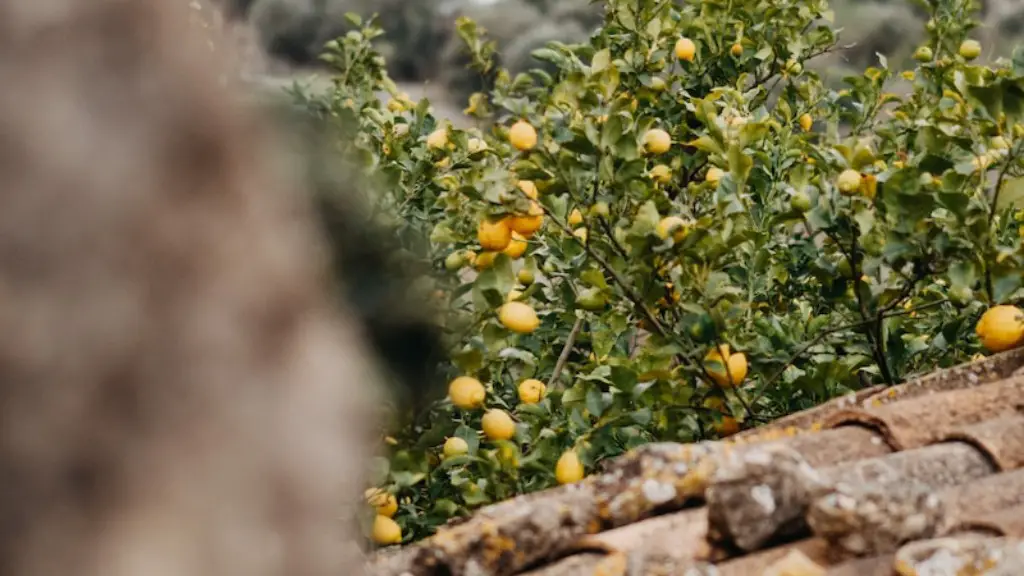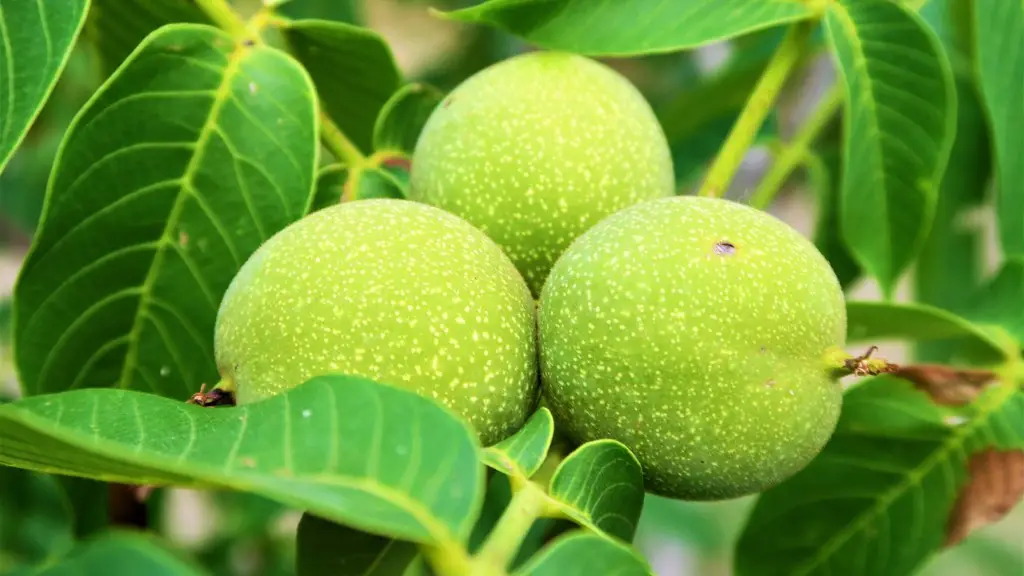Growing a lemon tree outside requires both knowledge and skill. But with some preparation, anyone can do it successfully. The first step is to find suitable soil. Loam or sandy loam soils are the best, as they provide good drainage and aeration. Amend the soil with compost or aged manure to provide the necessary nutrition.
After choosing the soil, it’s time to choose a suitable location. The lemon tree should be placed in an area that receives at least six hours of direct sunlight every day. When selecting a nursery, make sure to pick a tree that’s suitable for your specific climate.
The lemon tree should be watered regularly, but be careful not to overwater it. Too much water can cause its roots to rot. A good rule of thumb is to check the soil several inches down with your finger. If it’s dry, it’s time to water.
Fertilizing is also important since lemon trees are heavy feeders. Fertilizer should be applied two to three times during the growing season. A good mixture of balanced organic fertilizer and compost can also be used to provide an adequate nutrient balance.
Another important factor to consider is protecting the lemon tree from pests and diseases. Make sure to inspect the area regularly for signs of damage or infection. If pests or disease are detected, consult a professional or your local extension office for advice.
Finally, pruning is essential in order to keep the lemon tree healthy and productive. Remove dead or broken branches and do regular shaping to ensure proper growth. Pruning should be done in early spring and then again in mid to late summer.
How to Maintain a Lemon Tree
Maintaining a lemon tree outside once it’s established takes some ongoing effort. During the winter months, it’s important to mulch the tree to protect the root system and keep it warm. A group of 3 to 4 inches of straw or wood chips should suffice to protect the tree from the colder temperatures.
Also, during the summertime, inspect the lemon tree frequently for pests or diseases. If any are found, treat the tree immediately. Otherwise, minor problems can quickly become major ones.
Finally, don’t forget to prune. Pruning the leaves and removing dead or broken branches will ensure that the tree stays healthy and productive. Prune in mid to late summer, and consider using a professional to help if you’re unsure of how to proceed.
Harvesting Lemons from Trees
Harvesting lemons from a tree outside is an exciting process. Generally speaking, the lemons will be ready to be picked when their color changes from green to yellow and they can easily be removed from the tree. A handy tip is to keep a written record each year of when the lemons ripened so that you can plan accordingly the following year.
When harvesting lemons, never yank or pull, as this can damage the tree and affect future fruit production. Instead, use a pair of scissors (or pruners) and carefully remove the fruit by cutting off the stem. If the lemons are still green, and not quite yet ripe, they can be allowed to ripen off the tree.
Finally, pay attention to watering and fertilizing during the harvest season. Watering and fertilizing will ensure that the tree stays healthy and yields a good harvest as often as possible.
Preserving Lemons
When harvesting lemons from a tree, you may find that you can’t use all of the lemons in one go. Luckily, with some planning, it’s possible to preserve lemons for future use.
The most common methods for preserving lemons involve freezing or drying. Dried lemons can be used for a variety of uses, such as dipping in olive oil and adding to salads. To dry lemons, simply cut the lemons into thin slices and place them on a baking sheet. Set the oven to its lowest temperature setting and dry the lemons until they’re completely dry.
Freezing lemons is also possible. To freeze lemons, cut them into slices, place them in a resealable bag and then store them in the freezer. Lemons can be frozen for up to 3 months without affecting their flavor or texture. When ready to use, simply take the frozen lemons out of the bag and use as you would fresh lemons.
Finally, it’s possible to store lemons in a jar with salt and olive oil. Simply combine the lemon slices with some coarse sea salt and fill the jar with extra virgin olive oil. The lemons can last up to six months in this solution.
Growing Lemon Trees from Seeds
Growing lemon trees from seeds is an excellent alternative for those who don’t have access to a living lemon tree. The process of starting a lemon tree from seed does require time and patience, but it can be a charming and rewarding project.
When starting a lemon tree from seed, always start with a fresh, ripe lemon that is not waxed or sprayed. Slice the lemon open and remove the seeds, then rinse and dry them. Next, plant the seeds in moist soil or peat moss, making sure to keep them lightly covered with soil. Place the pot in a warm location and water it regularly.
Once the seedlings have sprouted, refill the pot with fresh soil. Make sure to feed the young plants regularly with a balanced fertilizer. When the leaves come out, it’s time to transplant the young lemon tree to an outdoor location.
When transplanting to an outdoor location, make sure to pick a spot that gets at least six hours of direct sunlight every day. If possible, keep the tree sheltered from strong winds. When transplanting, take care not to damage the trunk of the young lemon tree. After the tree is in the ground, make sure to water it regularly and mulch the base of the trunk to keep the soil moist and warm.
Finally, it’s important to prune the young lemon tree properly in order to ensure good fruit production. Prune branches that are growing too vertically and remove any dead or diseased branches. Keep in mind that a well-maintained lemon tree can produce healthy fruit for many years.




